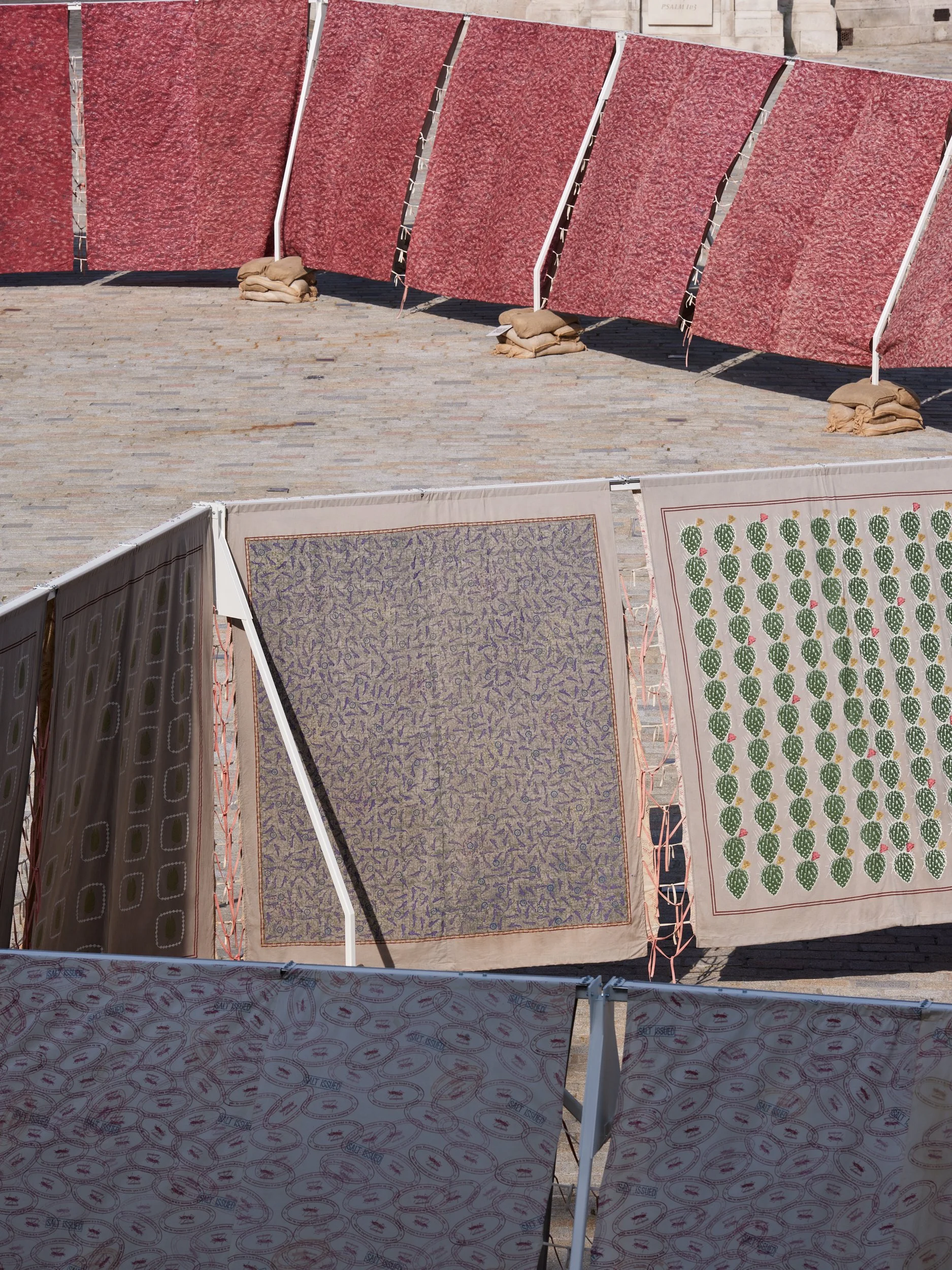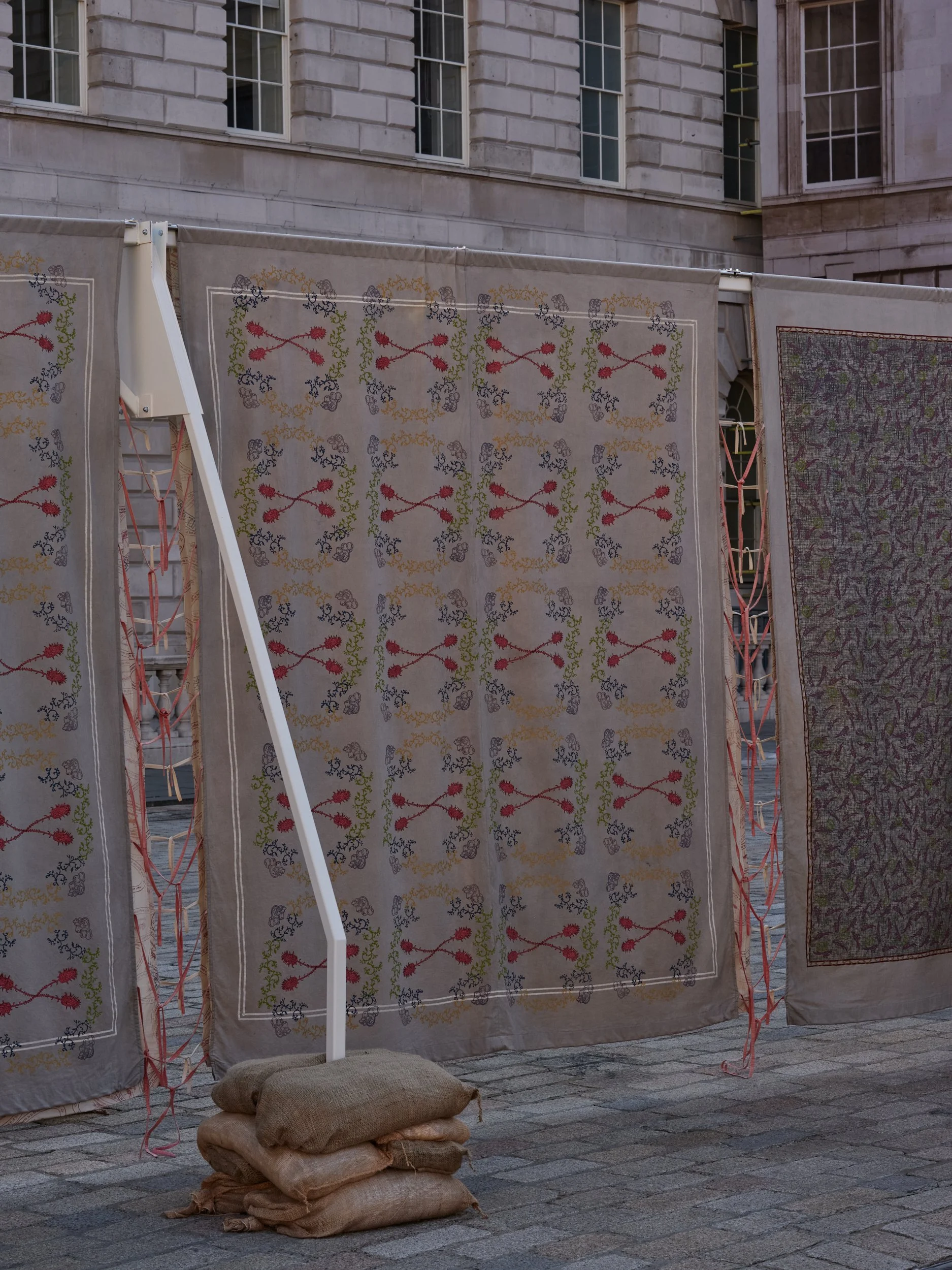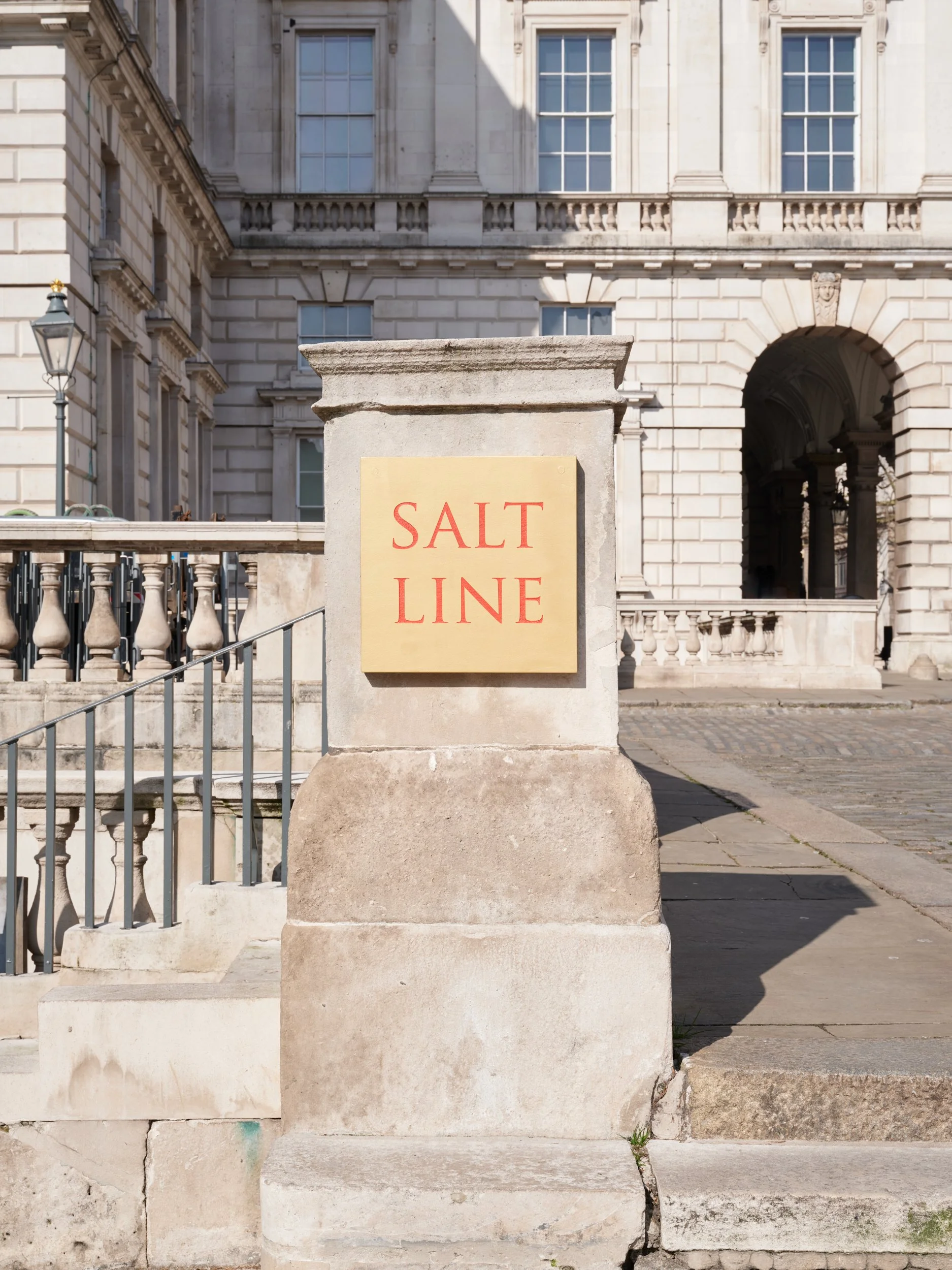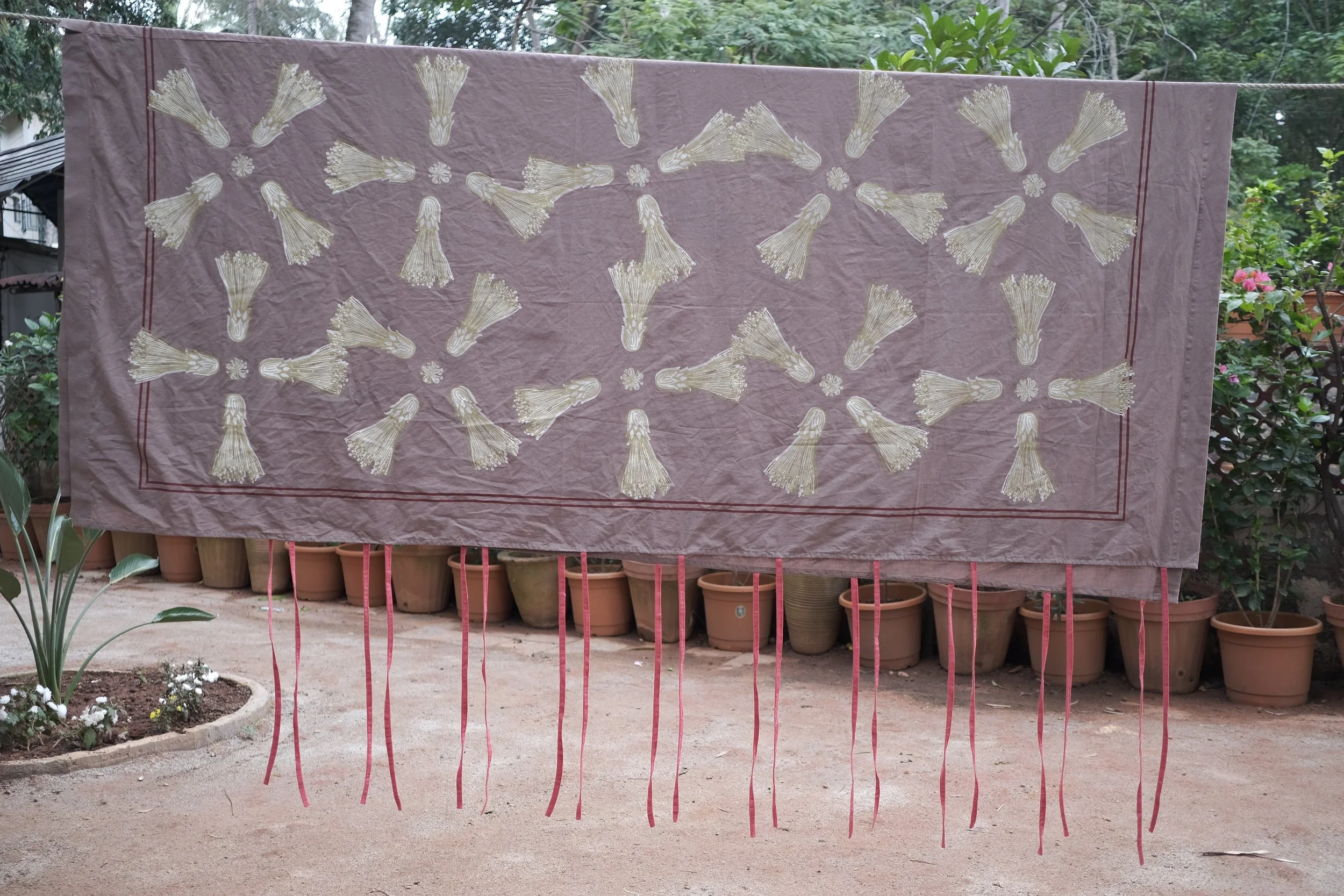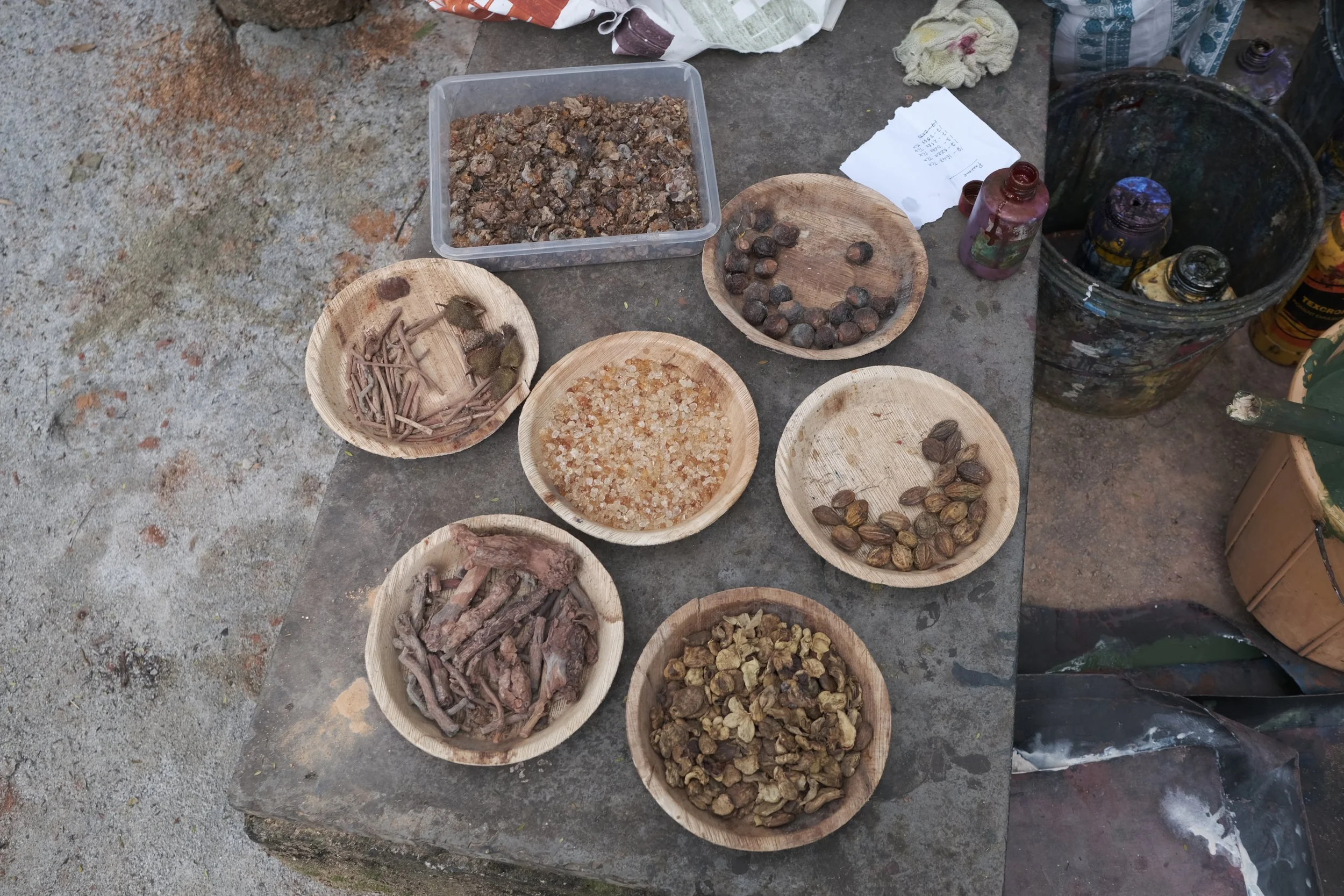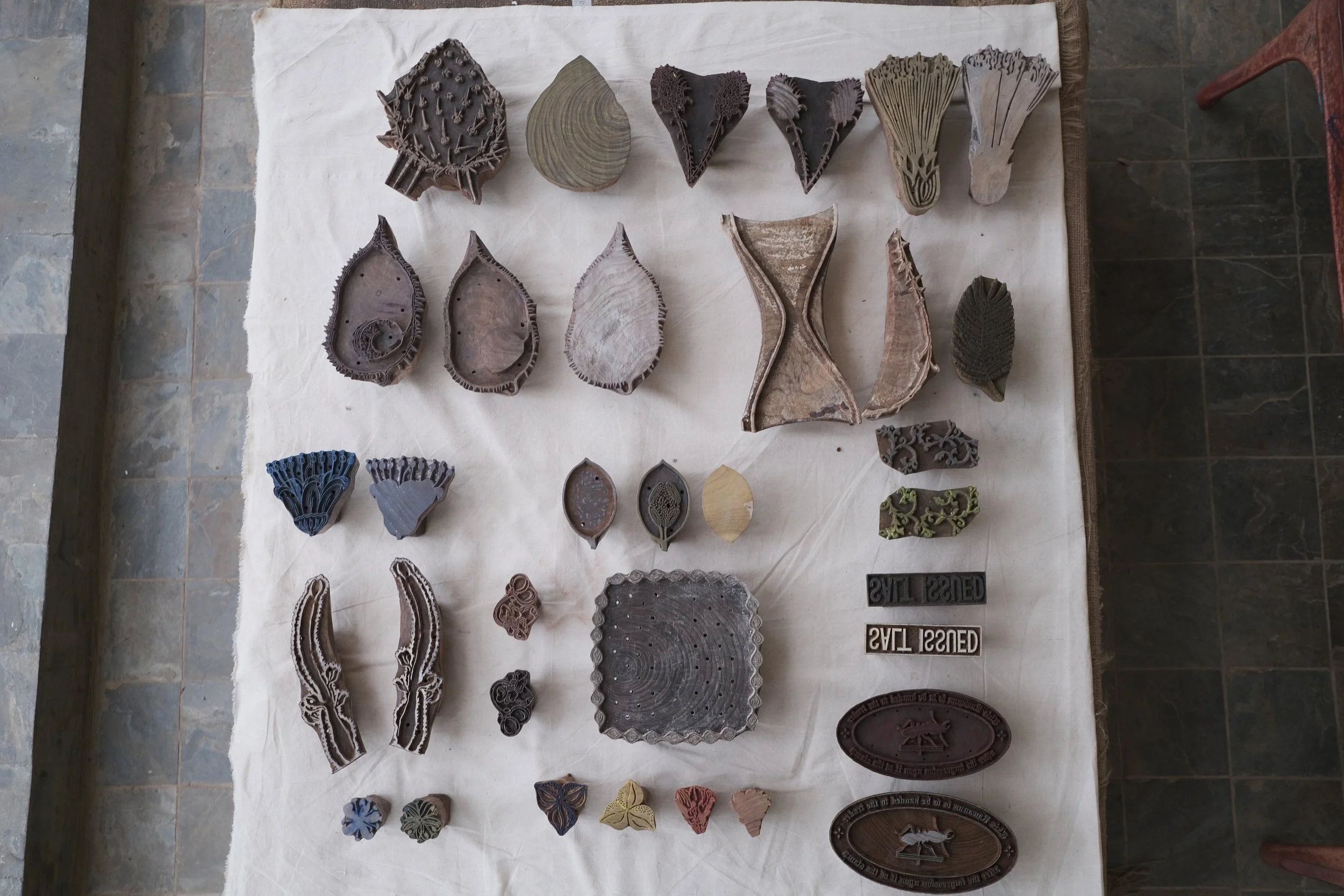namak halal/namak haram
namak halal/namak haram
2025, Textile Installation, 80m x 2m x 2.5m, double-sided
“Namak Halal/Namak Haram’ is a fabric installation scaling 80 metres in length and 2 and a half meters in height replicates the Inland Customs Line, a monumental 2500 mile-long ‘hedge’ composed of living vegetation created by the British to enforce salt taxation during colonial rule.
This reinterpretation features organic cotton printed with botanical dyes from the hedge's original plants, juxtaposing colonial botanical order with chaotic stamps and termite motifs. The title of the installation ‘namak halal’ (in accordance with salt, a term used to describe a loyalist of the British Empire) and ‘namak haram’ (against salt, a traitor of the Empire) equally highlights the hedge's dual nature as both an instrument of colonial extraction and a site of resistance to colonial occupation, as ideas of liberation were smuggled through and over the British-built barrier.
namak halal/namak haram was commissioned by somerset house for their 25th anniversary courtyard commission. the textiles were produced by tiipoi and block-printed by tharangini in bangalore, india.
Namak halal/namak haram is an imagination of this border tracing the line as if superimposed on the map of British India, from near the Gulf of Bengal to the Indus River.
In parts of northern India, courtiers, courtesans, musicians and priests - the ‘salt eaters’ - received part of their royal stipends in salt rather than money (salary from ‘sal’). The consumption of these local salts signified a deep bond to the soil, to the territory and - ultimately - allegiance to political power in place. The phrases ‘namak halal’ (loosely translated as ‘in accordance with salt’) and ‘namak haram’ (‘against the salt’) signify loyalty and betrayal, respectively.
As such, the hedge would have been both, ‘namak haram’ and ‘namak halal’, disrupting the people’s connection to their soil by taxing its most potent signifier, but also resisting occupation and exploitation through subversion, evasion, disruption, flipping power dynamics.
Reclaiming the act of stamping, imprinting, ‘namak halal/namak haram’ reflects upon Somerset House’s own history as the Stamp Office, where duties were on legal documents, licences and other printed matter. Diaphanous cotton is block printed with vegetal dyes, extracted from plants that were part of the hedge and fixed with salt.
On one side, the textile translates colonial botanical drawings of these weaponised plants into geometric arrangements. The base fabric is dyed in Acacia Catechu, which was also used as a dye for military uniforms.
The other side uses graphic paraphernalia from the colonial salt administration. The lion from the original British Empire exhibition emblems is replaced by the termite, which slowly overwhelms the print, rendering it illegible. Cochineal and Lac, dyes extracted from the insects living off the Prickly Pear and the Acacia, build tones of red - a crimson, scarlet stain that comments on climate change as prickly pears begin to overwhelm ecosystems.
While the line of fabric becomes an impassable obstruction, whispers, ideas, shadows, prophecies find their way through. Once used to control bodies and materials, this line of fabric aims to focus on its ultimate porosity, on its internal resistance, and to reflect on the division between those that viewed nature as a resource to be extracted and the natural world’s own insistence and agency.
installation images: somerset house 2025. image courtesy reinis lismanis/somerset house trust. drone footage courtesy yvonne zhang/somerset house trust
production images above : thrangini studio 2024. image courtesy gaurav krishna, tharangini studio (bangalore) with tiipoi

